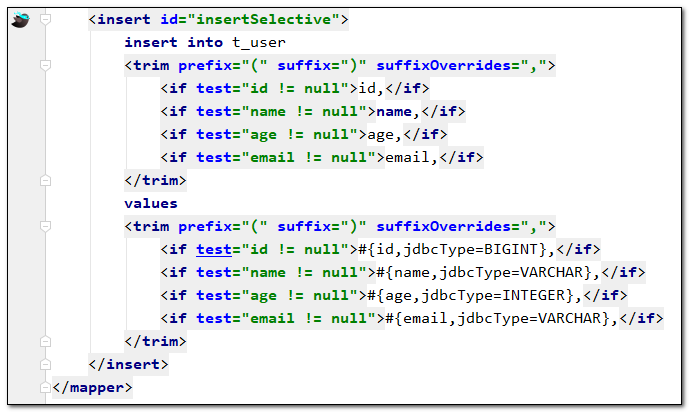MyBatis-Plus
入门案例
开发环境
- IDEA:2021.1.3
- JDK:jdk8
- 构建工具:Maven3.6.1
- MySQL:MySQL 8.0.26
- Navicat:Navicat Premium 15
- Spring Boot:2.6.7
- MyBatis-Plus:3.5.1
建库建表
打开Navicat运行以下SQL脚本进行建库建表
CREATE DATABASE `mybatis_plus` /*!40100 DEFAULT CHARACTER SET utf8mb4 */; use `mybatis_plus`; CREATE TABLE `user` ( `id` bigint(20) NOT NULL COMMENT '主键ID', `name` varchar(30) DEFAULT NULL COMMENT '姓名', `age` int(11) DEFAULT NULL COMMENT '年龄', `email` varchar(50) DEFAULT NULL COMMENT '邮箱', PRIMARY KEY (`id`) ) ENGINE=InnoDB DEFAULT CHARSET=utf8;插入几条测试数据
INSERT INTO user (id, name, age, email) VALUES (1, 'Jone', 18, 'test1@baomidou.com'), (2, 'Jack', 20, 'test2@baomidou.com'), (3, 'Tom', 28, 'test3@baomidou.com'), (4, 'Sandy', 21, 'test4@baomidou.com'), (5, 'Billie', 24, 'test5@baomidou.com');
创建工程
使用
Spring Initializer快速初始化一个 Spring Boot 工程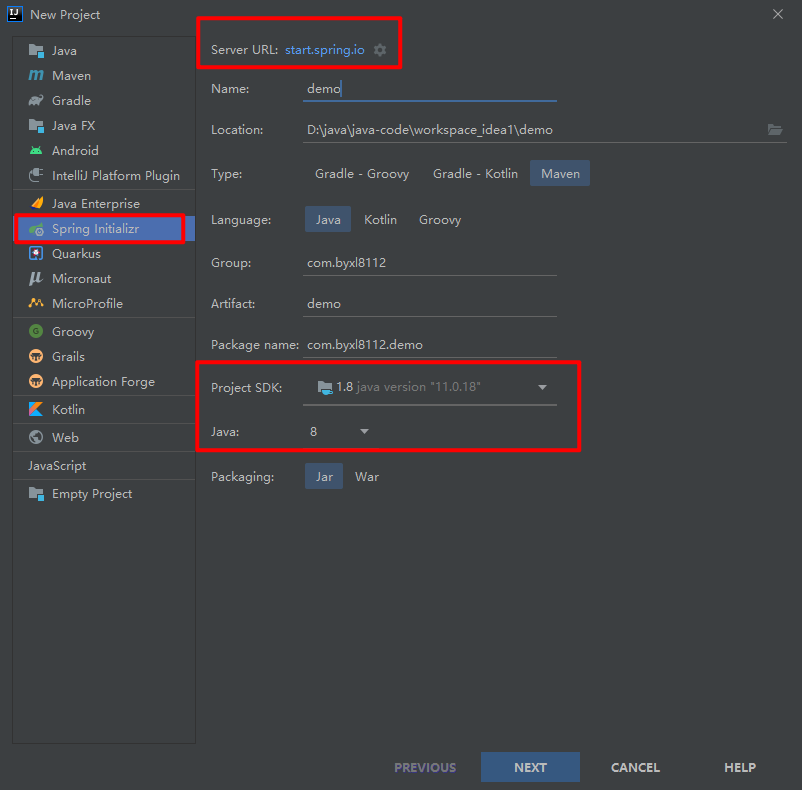
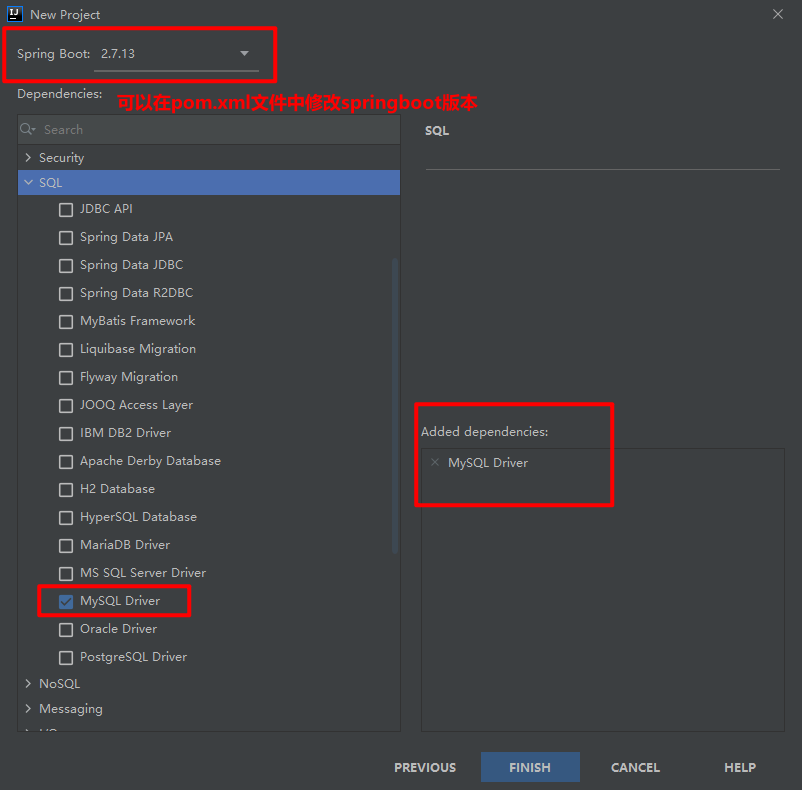
引入
MyBatis-Plus的依赖<dependency> <groupId>com.baomidou</groupId> <artifactId>mybatis-plus-boot-starter</artifactId> <version>3.5.1</version> </dependency>安装
Lombok插件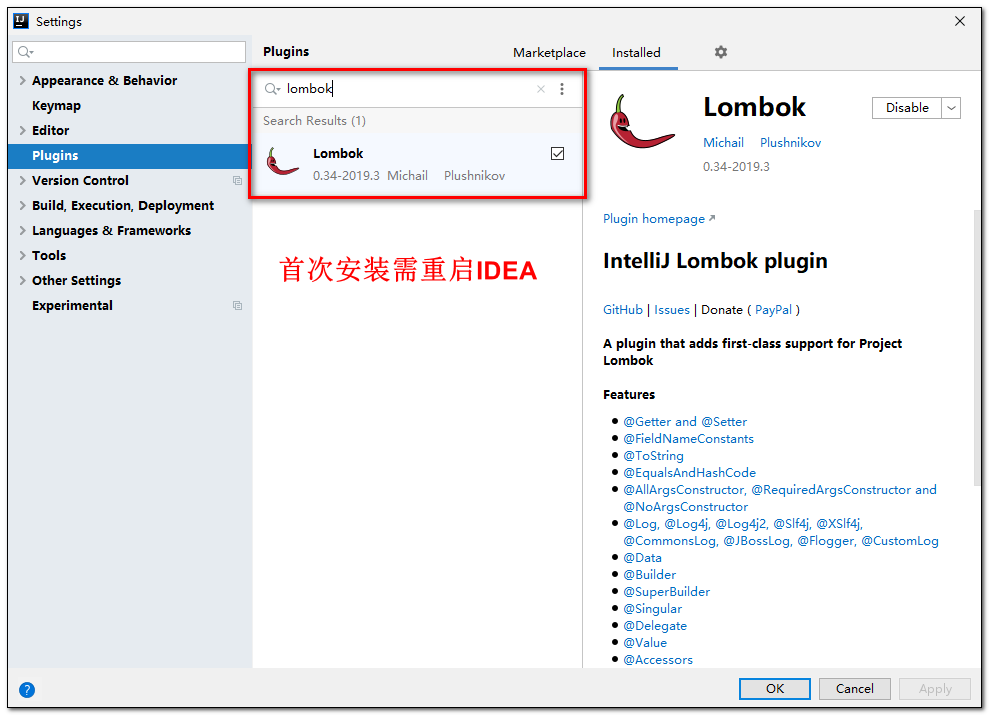
Lombok提供了一系列的注解,可以用于自动生成Java类的getter、setter、构造器、equals、hashCode、toString等方法,还可以生成日志、单例等常用代码。这些注解可以让我们在编写Java类时,只需要关注业务逻辑,不必再写一些冗余的代码,从而提高开发效率。
下面是一些常用的Lombok注解:
- @Getter/@Setter:自动生成类的getter/setter方法。
- @ToString:自动生成toString方法。
- @EqualsAndHashCode:自动生成equals和hashCode方法。
- @NoArgsConstructor:自动生成无参构造器。
- @AllArgsConstructor:自动生成全参构造器。
- @Data:自动生成getter/setter、equals、hashCode和toString方法。
- @Slf4j:自动生成日志对象。
配置编码
pom.xml文件
<?xml version="1.0" encoding="UTF-8"?> <project xmlns="http://maven.apache.org/POM/4.0.0" xmlns:xsi="http://www.w3.org/2001/XMLSchema-instance" xsi:schemaLocation="http://maven.apache.org/POM/4.0.0 https://maven.apache.org/xsd/maven-4.0.0.xsd"> <modelVersion>4.0.0</modelVersion> <parent> <groupId>org.springframework.boot</groupId> <artifactId>spring-boot-starter-parent</artifactId> <version>2.7.4</version> <relativePath/> <!-- lookup parent from repository --> </parent> <groupId>com.byxl8112</groupId> <artifactId>MyBatisPlus</artifactId> <version>0.0.1-SNAPSHOT</version> <name>MyBatisPlus</name> <description>Demo project for Spring Boot</description> <properties> <java.version>1.8</java.version> </properties> <dependencies> <dependency> <groupId>org.springframework.boot</groupId> <artifactId>spring-boot-starter</artifactId> </dependency> <!--引入MyBatis-Plus的依赖--> <dependency> <groupId>com.baomidou</groupId> <artifactId>mybatis-plus-boot-starter</artifactId> <version>3.5.1</version> </dependency> <!--lombok用于简化实体类开发--> <dependency> <groupId>org.projectlombok</groupId> <artifactId>lombok</artifactId> <optional>true</optional> </dependency> <dependency> <groupId>mysql</groupId> <artifactId>mysql-connector-java</artifactId> <version>8.0.26</version> <scope>runtime</scope> </dependency> <dependency> <groupId>org.springframework.boot</groupId> <artifactId>spring-boot-starter-test</artifactId> <scope>test</scope> </dependency> <!--代码生成器--> <dependency> <groupId>com.baomidou</groupId> <artifactId>mybatis-plus-generator</artifactId> <version>3.5.1</version> </dependency> <dependency> <groupId>org.freemarker</groupId> <artifactId>freemarker</artifactId> <version>2.3.31</version> </dependency> </dependencies> <build> <plugins> <plugin> <groupId>org.springframework.boot</groupId> <artifactId>spring-boot-maven-plugin</artifactId> </plugin> </plugins> </build> </project>
配置
application.yml文件application.yml文件:
#配置端口 server: port: 80 spring: #配置数据源 datasource: #配置数据源类型 type: com.zaxxer.hikari.HikariDataSource #配置连接数据库的信息 driver-class-name: com.mysql.cj.jdbc.Driver url: jdbc:mysql://localhost:3306/mybatis_plus?characterEncoding=utf-8&useSSL=false username: root password: abc123 #MyBatis-Plus相关配置 mybatis-plus: configuration: #配置日志 log-impl: org.apache.ibatis.logging.stdout.StdOutImpl在 Spring Boot 启动类中添加
@MapperScan注解,扫描 Mapper 包com.byxl8112.MybatisPlus.demo包下的MybatisPlusDemoApplication.java类
@SpringBootApplication @MapperScan("com.byxl8112.MyBatisPlus_demo.mapper") //指定Mapper接口所在的包 public class MybatisPlusDemoApplication { public static void main(String[] args) { SpringApplication.run(MybatisPlusDemoApplication.class, args); } }编写实体类
User.java(此处使用了 Lombok 简化代码)com.byxl8112.MyBatisPlus_demo.pojo 包下的User.java类
@Data //lombok,注解自动生成get/set/equal/hashCode/toString方法 public class User { private Long id; private String name; private Integer age; private String email; }编写 Mapper 包下的
UserMapper接口BaseMapper是MyBatis-Plus提供的模板mapper,其中包含了基本的CRUD方法,泛型为操作的实体类型
IDEA在 userMapper 处报错,因为找不到注入的对象,因为类是动态创建的,但是程序可以正确的执行。为了避免报错,可以在mapper接口上添加 @Repository 注解
com.byxl8112.MyBatisPlus_demo.mapper 包下的UserMapper接口
@Repository //可加可不加 public interface UserMapper extends BaseMapper<User> {}
测试查询
编写一个测试类
MyBatisPlusTest.java@SpringBootTest //需要引入@SpringBootTest注解 public class MyBatisPlusTest { @Autowire private UserMapper userMapper; /** * 测试查询所有数据 */ @Test void testSelectList(){ //通过条件构造器查询一个list集合,若没有条件,则可以设置null为参数 List<User> users = userMapper.selectList(null); users.forEach(System.out::println); } }控制台打印查询结果

基本CRUD
BaseMapper<T>
说明:
- 通用 CRUD 封装BaseMapper 接口,为
Mybatis-Plus启动时自动解析实体表关系映射转换为Mybatis内部对象注入容器- 泛型
T为任意实体对象- 参数
Serializable为任意类型主键Mybatis-Plus不推荐使用复合主键约定每一张表都有自己的唯一id主键- 对象
Wrapper为条件构造器
MyBatis-Plus中的基本CRUD在内置的BaseMapper中都已得到了实现,因此我们继承该接口以后可以直接使用。
本次演示的CRUD操作不包含参数带有条件构造器的方法,关于条件构造器将单独在一个章节进行演示。
BaseMapper中提供的CRUD方法:
增加:Insert
// 插入一条记录 int insert(T entity);删除:Delete
// 根据 entity 条件,删除记录 int delete(@Param(Constants.WRAPPER) Wrapper<T> wrapper); // 删除(根据ID 批量删除) int deleteBatchIds(@Param(Constants.COLLECTION) Collection<? extends Serializable> idList); // 根据 ID 删除 int deleteById(Serializable id); // 根据 columnMap 条件,删除记录 int deleteByMap(@Param(Constants.COLUMN_MAP) Map<String, Object> columnMap);修改:Update
// 根据 whereWrapper 条件,更新记录 int update(@Param(Constants.ENTITY) T updateEntity, @Param(Constants.WRAPPER) Wrapper<T> whereWrapper); // 根据 ID 修改 int updateById(@Param(Constants.ENTITY) T entity);查询:Select
// 根据 ID 查询 T selectById(Serializable id); // 根据 entity 条件,查询一条记录 T selectOne(@Param(Constants.WRAPPER) Wrapper<T> queryWrapper); // 查询(根据ID 批量查询) List<T> selectBatchIds(@Param(Constants.COLLECTION) Collection<? extends Serializable> idList); // 根据 entity 条件,查询全部记录 List<T> selectList(@Param(Constants.WRAPPER) Wrapper<T> queryWrapper); // 查询(根据 columnMap 条件) List<T> selectByMap(@Param(Constants.COLUMN_MAP) Map<String, Object> columnMap); // 根据 Wrapper 条件,查询全部记录 List<Map<String, Object>> selectMaps(@Param(Constants.WRAPPER) Wrapper<T> queryWrapper); // 根据 Wrapper 条件,查询全部记录。注意: 只返回第一个字段的值 List<Object> selectObjs(@Param(Constants.WRAPPER) Wrapper<T> queryWrapper); // 根据 entity 条件,查询全部记录(并翻页) IPage<T> selectPage(IPage<T> page, @Param(Constants.WRAPPER) Wrapper<T> queryWrapper); // 根据 Wrapper 条件,查询全部记录(并翻页) IPage<Map<String, Object>> selectMapsPage(IPage<T> page, @Param(Constants.WRAPPER) Wrapper<T> queryWrapper); // 根据 Wrapper 条件,查询总记录数 Integer selectCount(@Param(Constants.WRAPPER) Wrapper<T> queryWrapper);
调用Mapper层实现CRUD
插入
/**
* 测试插入一条数据
* MyBatis-Plus在实现插入数据时,会默认基于雪花算法的策略生成id
*/
@Test
public void testInsert(){
User user = new User();
user.setName("Vz");
user.setAge(21);
user.setEmail("vz@oz6.cn");
int result = userMapper.insert(user);
System.out.println(result > 0 ? "添加成功!" : "添加失败!");
System.out.println("受影响的行数为:" + result);
//1527206783590903810(当前 id 为雪花算法自动生成的id)
System.out.println("id自动获取" + user.getId());
}删除
根据ID删除数据
调用方法:int deleteById(Serializable id);
/**
* 测试根据id删除一条数据
*/
@Test
public void testDeleteById(){
int result = userMapper.deleteById(1527206783590903810L);
System.out.println(result > 0 ? "删除成功!" : "删除失败!");
System.out.println("受影响的行数为:" + result);
}根据ID批量删除数据
调用方法:int deleteBatchIds(@Param(Constants.COLLECTION) Collection<? extends Serializable> idList);
/**
* 测试通过id批量删除数据
*/
@Test
public void testDeleteBatchIds(){
List<Long> ids = Arrays.asList(6L,7L,8L);
int result = userMapper.deleteBatchIds(ids);
System.out.println(result > 0 ? "删除成功!" : "删除失败!");
System.out.println("受影响的行数为:" + result);
}根据Map条件删除数据
调用方法:int deleteByMap(@Param(Constants.COLUMN_MAP) Map<String, Object> columnMap);
/**
* 测试根据Map集合中所设置的条件删除数据
*/
@Test
public void testDeleteByMap(){
//当前演示为根据name和age删除数据
//执行SQL为:DELETE FROM user WHERE name = ? AND age = ?
Map<String,Object> map = new HashMap<>();
map.put("name","Vz");
map.put("age",21);
int result = userMapper.deleteByMap(map);
System.out.println(result > 0 ? "删除成功!" : "删除失败!");
System.out.println("受影响的行数为:" + result);
}修改
调用方法:int updateById(@Param(Constants.ENTITY) T entity);
/**
* 测试根据id修改用户信息
*/
@Test
public void testUpdateById(){
//执行SQL为: UPDATE user SET name=?, age=?, email=? WHERE id=?
User user = new User();
user.setId(6L);
user.setName("VzUpdate");
user.setAge(18);
user.setEmail("Vz@sina.com");
int result = userMapper.updateById(user);
System.out.println(result > 0 ? "修改成功!" : "修改失败!");
System.out.println("受影响的行数为:" + result);
}查询
根据ID查询用户信息
调用方法:T selectById(Serializable id);
/**
* 测试根据id查询用户数据
*/
@Test
public void testSelectById(){
User user = userMapper.selectById(1L);
System.out.println(user);
}根据多个ID查询多个用户信息
调用方法:List
selectBatchIds(@Param(Constants.COLLECTION) Collection<? extends Serializable> idList);
/**
* 根据多个id查询用户数据
*/
@Test
public void testSelectBatchIds(){
//执行SQL为:SELECT id,name,age,email FROM user WHERE id IN ( ? , ? , ? )
List<Long> ids = Arrays.asList(1L,2L,3L);
List<User> users = userMapper.selectBatchIds(ids);
users.forEach(System.out::println);
}根据Map条件查询用户信息
调用方法:List
selectByMap(@Param(Constants.COLUMN_MAP) Map<String, Object> columnMap);
/**
* 根据Map所设置的条件查询用户
*/
@Test
public void testSelectByMap(){
//执行SQL为:SELECT id,name,age,email FROM user WHERE age = ?
Map<String,Object> map = new HashMap<>();
map.put("age",18);
List<User> users = userMapper.selectByMap(map);
users.forEach(System.out::println);
}查询所有用户信息
调用方法:List
selectList(@Param(Constants.WRAPPER) Wrapper queryWrapper);
/**
* 测试查询所有数据
*/
@Test
void testSelectList(){
List<User> users = userMapper.selectList(null);
users.forEach(System.out::println);
}通用Service
说明:
- 通用 Service CRUD 封装
IService接口,进一步封装 CRUD 采用get 查询单行remove 删除list 查询集合page 分页前缀命名方式区分Mapper层避免混淆,- 泛型
T为任意实体对象- 建议如果存在自定义通用 Service 方法的可能,请创建自己的
IBaseService继承Mybatis-Plus提供的基类- 对象
Wrapper为 条件构造器
MyBatis-Plus中有一个接口 **IService**和其实现类 **ServiceImpl**,封装了常见的业务层逻辑,详情查看源码IService和ServiceImpl
因此我们在使用的时候仅需在自己定义的**Service接口中继承IService接口,在自己的实现类中实现自己的Service并继承ServiceImpl**即可
IService中的CRUD方法
增加:Save、SaveOrUpdate
// 插入一条记录(选择字段,策略插入) boolean save(T entity); // 插入(批量) boolean saveBatch(Collection<T> entityList); // 插入(批量) boolean saveBatch(Collection<T> entityList, int batchSize); // TableId 注解存在更新记录,否插入一条记录 boolean saveOrUpdate(T entity); // 根据updateWrapper尝试更新,否继续执行saveOrUpdate(T)方法 boolean saveOrUpdate(T entity, Wrapper<T> updateWrapper); // 批量修改插入 boolean saveOrUpdateBatch(Collection<T> entityList); // 批量修改插入 boolean saveOrUpdateBatch(Collection<T> entityList, int batchSize);删除:Remove
// 根据 entity 条件,删除记录 boolean remove(Wrapper<T> queryWrapper); // 根据 ID 删除 boolean removeById(Serializable id); // 根据 columnMap 条件,删除记录 boolean removeByMap(Map<String, Object> columnMap); // 删除(根据ID 批量删除) boolean removeByIds(Collection<? extends Serializable> idList);修改:Update
// 根据 UpdateWrapper 条件,更新记录 需要设置sqlset boolean update(Wrapper<T> updateWrapper); // 根据 whereWrapper 条件,更新记录 boolean update(T updateEntity, Wrapper<T> whereWrapper); // 根据 ID 选择修改 boolean updateById(T entity); // 根据ID 批量更新 boolean updateBatchById(Collection<T> entityList); // 根据ID 批量更新 boolean updateBatchById(Collection<T> entityList, int batchSize);查询:Get、List、Count
// 根据 ID 查询 T getById(Serializable id); // 根据 Wrapper,查询一条记录。结果集,如果是多个会抛出异常,随机取一条加上限制条件 wrapper.last("LIMIT 1") T getOne(Wrapper<T> queryWrapper); // 根据 Wrapper,查询一条记录 T getOne(Wrapper<T> queryWrapper, boolean throwEx); // 根据 Wrapper,查询一条记录 Map<String, Object> getMap(Wrapper<T> queryWrapper); // 根据 Wrapper,查询一条记录 <V> V getObj(Wrapper<T> queryWrapper, Function<? super Object, V> mapper); // 查询所有 List<T> list(); // 查询列表 List<T> list(Wrapper<T> queryWrapper); // 查询(根据ID 批量查询) Collection<T> listByIds(Collection<? extends Serializable> idList); // 查询(根据 columnMap 条件) Collection<T> listByMap(Map<String, Object> columnMap); // 查询所有列表 List<Map<String, Object>> listMaps(); // 查询列表 List<Map<String, Object>> listMaps(Wrapper<T> queryWrapper); // 查询全部记录 List<Object> listObjs(); // 查询全部记录 <V> List<V> listObjs(Function<? super Object, V> mapper); // 根据 Wrapper 条件,查询全部记录 List<Object> listObjs(Wrapper<T> queryWrapper); // 根据 Wrapper 条件,查询全部记录 <V> List<V> listObjs(Wrapper<T> queryWrapper, Function<? super Object, V> mapper); // 查询总记录数 int count(); // 根据 Wrapper 条件,查询总记录数 int count(Wrapper<T> queryWrapper);分页:Page
// 根据 ID 查询 T getById(Serializable id); // 根据 Wrapper,查询一条记录。结果集,如果是多个会抛出异常,随机取一条加上限制条件 wrapper.last("LIMIT 1") T getOne(Wrapper<T> queryWrapper); // 根据 Wrapper,查询一条记录 T getOne(Wrapper<T> queryWrapper, boolean throwEx); // 根据 Wrapper,查询一条记录 Map<String, Object> getMap(Wrapper<T> queryWrapper); // 根据 Wrapper,查询一条记录 <V> V getObj(Wrapper<T> queryWrapper, Function<? super Object, V> mapper);
调用Service层操作数据
我们在自己的Service接口中通过继承MyBatis-Plus提供的IService接口,不仅可以获得其提供的CRUD方法,而且还可以使用自身定义的方法。
创建
UserService并继承IService/** * UserService继承IService模板提供的基础功能 */ public interface UserService extends IService<User> {}创建
UserService的实现类并继承ServiceImpl/** * ServiceImpl实现了IService,提供了IService中基础功能的实现 * 若ServiceImpl无法满足业务需求,则可以使用自定的UserService定义方法,并在实现类中实现 */ @Service public class UserServiceImpl extends ServiceImpl<UserMapper,User> implements UserService{}测试查询记录数
调用方法:int count();
@Test public void testGetCount(){ //查询总记录数 //执行的SQL为:SELECT COUNT( * ) FROM user long count = userService.count(); System.out.println("总记录数:" + count); }测试批量插入数据
调用方法:boolean saveBatch(Collection
entityList); @Test public void test(){ List<User> list = new ArrayList<>(); for (int i = 1; i <= 10; i++) { User user = new User(); user.setName("byxl"+i); user.setAge(20+i); list.add(user); } boolean b = userService.saveBatch(list); System.out.println(b ? "添加成功!" : "添加失败!"); }
常用注解
MyBatis-Plus提供的注解可以帮我们解决一些数据库与实体之间相互映射的问题。
@TableName
经过以上的测试,在使用MyBatis-Plus实现基本的CRUD时,我们并没有指定要操作的表,只是在Mapper接口继承BaseMapper时,设置了泛型User,而操作的表为user表,由此得出结论,MyBatis-Plus在确定操作的表时,由BaseMapper的泛型决定,即实体类型决定,且默认操作的表名和实体类型的类名一致。
引出问题
若实体类类型的类名和要操作的表的表名不一致,会出现什么问题?
我们将表
user更名为t_user,测试查询功能
程序抛出异常,Table ‘mybatis_plus.user’ doesn’t exist,因为现在的表名为
t_user,而默认操作的表名和实体类型的类名一致,即user表
解决问题
- 使用注解解决问题
在实体类类型上添加
@TableName("t_user"),标识实体类对应的表,即可成功执行SQL语句
User.java中
@Data
@TableName("t_user")
public class User {
private Long id;
private String name;
private Integer age;
private String email;
}- 使用全局配置解决问题
在开发的过程中,我们经常遇到以上的问题,即实体类所对应的表都有固定的前缀,例如
t_或tbl_此时,可以使用MyBatis-Plus提供的全局配置,为实体类所对应的表名设置默认的前缀,那么就不需要在每个实体类上通过@TableName标识实体类对应的表
application.yml文件中:
mybatis-plus:
global-config:
db-config:
# 设置实体类所对应的表的统一前缀
table-prefix: t_@TableId
经过以上的测试,MyBatis-Plus在实现CRUD时,会默认将id作为主键列,并在插入数据时,默认基于雪花算法的策略生成id
引出问题
若实体类和表中表示主键的不是id,而是其他字段,例如uid,MyBatis-Plus会自动识别uid为主键列吗?
我们实体类中的属性
id改为uid,将表中的字段id也改为uid,测试添加功能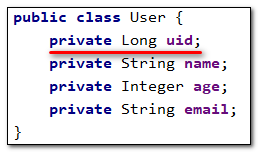

程序抛出异常,Field ‘uid’ doesn’t have a default value,说明MyBatis-Plus没有将
uid作为主键赋值
解决问题
在实体类中uid属性上通过
@TableId将其标识为主键,即可成功执行SQL语句
@Date
public class User {
@TableId
private Long uid;
private String name;
private Integer age;
private String email;
}或者在application.yml中设置统一的主键生成策略 :auto表示自增
mybatis-plus:
global-config:
db-config:
id-type: auto@TableId的value属性
若实体类中主键对应的属性为id,而表中表示主键的字段为uid,此时若只在属性id上添加注解@TableId,则抛出异常**Unknown column ‘id’ in ‘field list’**,即MyBatis-Plus仍然会将id作为表的主键操作,而表中表示主键的是字段uid此时需要通过@TableId注解的value属性,指定表中的主键字段,
@TableId("uid")或@TableId(value="uid")

@TableId的type属性
type属性用来定义主键策略:默认雪花算法
常用的主键策略:
| 值 | 描述 |
|---|---|
| IdType.ASSIGN_ID(默认) | 基于雪花算法的策略生成数据id,与数据库id是否设置自增无关 |
| IdType.AUTO | 使用数据库的自增策略,注意,该类型请确保数据库设置了id自增, |
配置全局主键策略:
application.yml文件:
#MyBatis-Plus相关配置
mybatis-plus:
configuration:
#配置日志
log-impl: org.apache.ibatis.logging.stdout.StdOutImpl
global-config:
db-config:
#配置mp的主键策略为自增
id-type: auto
# 设置实体类所对应的表的统一前缀
table-prefix: t_@TbaleField
经过以上的测试,我们可以发现,MyBatis-Plus在执行SQL语句时,要保证实体类中的属性名和表中的字段名一致
如果实体类中的属性名和字段名不一致的情况,会出现什么问题呢?
情况一
若实体类中的属性使用的是驼峰命名风格,而表中的字段使用的是下划线命名风格
例如实体类属性userName,表中字段user_name
此时MyBatis-Plus会自动将下划线命名风格转化为驼峰命名风格
相当于在MyBatis中配置
情况二
若实体类中的属性和表中的字段不满足情况1
例如实体类属性
name,表中字段username此时需要在实体类属性上使用
@TableField("username")设置属性所对应的字段名
@TableName("t_user")
public class User {
@TableId("uid")
private Long id;
@TableField("username")
private String name;
private Integer age;
private String email;
}@TableLogic
逻辑删除
物理删除:真实删除,将对应数据从数据库中删除,之后查询不到此条被删除的数据
逻辑删除:假删除,将对应数据中代表是否被删除字段的状态修改为“被删除状态”,之后在数据库中仍旧能看到此条数据记录
使用场景:可以进行数据恢复
实现逻辑删除
数据库中创建逻辑删除状态列,设置默认值为0

实体类中添加逻辑删除属性
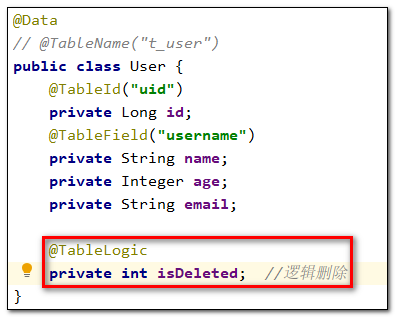
测试删除功能,真正执行的是修改
public void testDeleteById(){ int result = userMapper.deleteById(1527472864163348482L); System.out.println(result > 0 ? "删除成功!" : "删除失败!"); System.out.println("受影响的行数为:" + result); }
此时执行查询方法,查询的结果为自动添加条件
is_deleted=0
条件构造器
Wrapper介绍
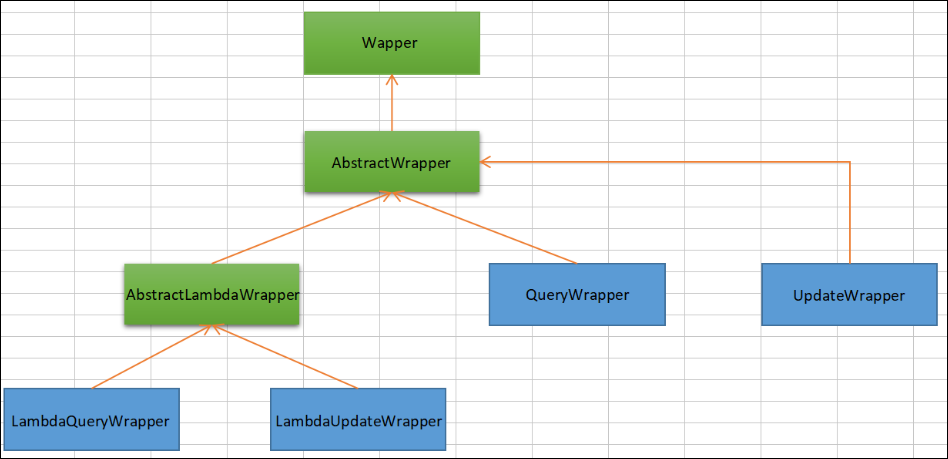
Wrapper: 条件构造抽象类,最顶端父类AbstractWrapper: 用于查询条件封装,生成 sql 的 where 条件QueryWrapper: 查询条件封装UpdateWrapper: Update 条件封装AbstractLambdaWrapper: 使用Lambda 语法LambdaQueryWrapper:用于Lambda语法使用的查询WrapperLambdaUpdateWrapper: Lambda 更新封装Wrapper
QueryWrapper
组装查询条件
执行SQL:SELECT uid AS id,username AS name,age,email,is_deleted FROM t_user WHERE is_deleted=0 AND (username LIKE ? AND age BETWEEN ? AND ? AND email IS NOT NULL)
public void test01(){ //查询用户名包含a,年龄在20到30之间,邮箱信息不为null的用户信息 QueryWrapper<User> queryWrapper = new QueryWrapper<>(); queryWrapper.like("username","a").between("age",20,30).isNotNull("email"); List<User> users = userMapper.selectList(queryWrapper); users.forEach(System.out::println); }组装排序条件
执行SQL:SELECT uid AS id,username AS name,age,email,is_deleted FROM t_user WHERE is_deleted=0 ORDER BY age DESC,id ASC
public void test02(){ //查询用户信息,按照年龄的降序排序,若年龄相同,则按照id升序排序 QueryWrapper<User> queryWrapper = new QueryWrapper<>(); queryWrapper.orderByDesc("age").orderByAsc("id"); List<User> users = userMapper.selectList(queryWrapper); users.forEach(System.out::println); }组装删除条件
执行SQL:UPDATE t_user SET is_deleted=1 WHERE is_deleted=0 AND (email IS NULL)
public void test03(){ //删除邮箱地址为null的用户信息 QueryWrapper<User> queryWrapper = new QueryWrapper<>(); queryWrapper.isNull("email"); int result = userMapper.delete(queryWrapper); System.out.println(result > 0 ? "删除成功!" : "删除失败!"); System.out.println("受影响的行数为:" + result); }条件的优先级
执行SQL:UPDATE t_user SET user_name=?, email=? WHERE is_deleted=0 AND (age > ? AND user_name LIKE ? OR email IS NULL)
public void test04(){ //将(年龄大于20并且用户名中包含有a)或邮箱为null的用户信息修改 UpdateWrapper<User> updateWrapper = new UpdateWrapper<>(); updateWrapper.gt("age",20).like("username","a").or().isNull("email"); User user = new User(); user.setName("Oz"); user.setEmail("test@oz6.com"); int result = userMapper.update(user, updateWrapper); System.out.println(result > 0 ? "修改成功!" : "修改失败!"); System.out.println("受影响的行数为:" + result); }执行SQL:UPDATE t_user SET username=?, email=? WHERE is_deleted=0 AND (username LIKE ? AND (age > ? OR email IS NULL))
public void test05(){ //将用户名中包含有a并且(年龄大于20或邮箱为null)的用户信息修改 UpdateWrapper<User> updateWrapper = new UpdateWrapper<>(); updateWrapper.like("username","a").and(i->i.gt("age",20).or().isNull("email")); User user = new User(); user.setName("Vz7797"); user.setEmail("test@ss8o.com"); int result = userMapper.update(user, updateWrapper); System.out.println(result > 0 ? "修改成功!" : "修改失败!"); System.out.println("受影响的行数为:" + result); }组装select子句
执行SQL:SELECT username,age,email FROM t_user WHERE is_deleted=0
public void test06(){ //查询用户的用户名、年龄、邮箱信息 QueryWrapper<User> queryWrapper = new QueryWrapper<>(); queryWrapper.select("username","age","email"); List<Map<String, Object>> maps = userMapper.selectMaps(queryWrapper); maps.forEach(System.out::println); }实现子查询
执行SQL:SELECT uid AS id,user_name AS name,age,email,is_deleted FROM t_user WHERE is_deleted=0 AND (uid IN (select uid from t_user where uid <= 100))
public void test07(){ //查询id小于等于100的用户信息 QueryWrapper<User> queryWrapper = new QueryWrapper<>(); queryWrapper.inSql("uid", "select uid from t_user where uid <= 100"); List<User> list = userMapper.selectList(queryWrapper); list.forEach(System.out::println); }
UpdateWrapper
UpdateWrapper不仅拥有QueryWrapper的组装条件功能,还提供了set方法进行修改对应条件的数据库信息
public void test08(){
//将用户名中包含有a并且(年龄大于20或邮箱为null)的用户信息修改
UpdateWrapper<User> updateWrapper = new UpdateWrapper<>();
updateWrapper.like("username","a").and( i -> i.gt("age",20).or().isNull("email")).set("email","svip@qq.com");
int result = userMapper.update(null, updateWrapper);
System.out.println(result > 0 ? "修改成功!" : "修改失败!");
System.out.println("受影响的行数为:" + result);
}condition
在真正开发的过程中,组装条件是常见的功能,而这些条件数据来源于用户输入,是可选的,因此我们在组装这些条件时,必须先判断用户是否选择了这些条件,若选择则需要组装该条件,若没有选择则一定不能组装,以免影响SQL执行的结果
思路一
执行SQL:SELECT uid AS id,user_name AS name,age,email,is_deleted FROM t_user WHERE is_deleted=0 AND (user_name LIKE ? AND age <= ?)
public void test09(){ String username = "a"; Integer ageBegin = null; Integer ageEnd = 30; QueryWrapper<User> queryWrapper = new QueryWrapper<>(); if(StringUtils.isNotBlank(username)){ //isNotBlank判断某个字符创是否不为空字符串、不为null、不为空白符 queryWrapper.like("user_name", username); } if(ageBegin != null){ queryWrapper.ge("age", ageBegin); } if(ageEnd != null){ queryWrapper.le("age", ageEnd); } List<User> list = userMapper.selectList(queryWrapper); list.forEach(System.out::println); }思路二
上面的实现方案没有问题,但是代码比较复杂,我们可以使用带condition参数的重载方法构建查询条件,简化代码的编写
public void test10(){ String username = "a"; Integer ageBegin = null; Integer ageEnd = 30; QueryWrapper<User> queryWrapper = new QueryWrapper<>(); queryWrapper.like(StringUtils.isNotBlank(username), "user_name", username) .ge(ageBegin != null, "age", ageBegin) .le(ageEnd != null, "age", ageEnd); List<User> list = userMapper.selectList(queryWrapper); list.forEach(System.out::println); }
LambdaQueryWrapper
功能等同于QueryWrapper,提供了Lambda表达式的语法可以避免填错列名。
public void test11(){
String username = "a";
Integer ageBegin = null;
Integer ageEnd = 30;
LambdaQueryWrapper<User> queryWrapper = new LambdaQueryWrapper<>();
queryWrapper.like(StringUtils.isNotBlank(username), User::getName, username)
.ge(ageBegin != null, User::getAge, ageBegin)
.le(ageEnd != null, User::getAge, ageEnd);
List<User> list = userMapper.selectList(queryWrapper);
list.forEach(System.out::println);
}LambdaUpdateWrapper
功能等同于UpdateWrapper,提供了Lambda表达式的语法可以避免填错列名。
public void test12(){
//将用户名中包含有a并且(年龄大于20或邮箱为null)的用户信息修改
LambdaUpdateWrapper<User> updateWrapper = new LambdaUpdateWrapper<>();
updateWrapper.like(User::getName, "a")
.and(i -> i.gt(User::getAge, 20).or().isNull(User::getEmail));
updateWrapper.set(User::getName, "小黑").set(User::getEmail,"abc@atguigu.com");
int result = userMapper.update(null, updateWrapper);
System.out.println("result:"+result);
}常用插件
分页插件
MyBatis Plus自带分页插件,只要简单的配置即可实现分页功能
添加配置类
MyBatisPlusConfig@Configuration @MapperScan("com.atguigu.mybatisplus.mapper") public class MyBatisPlusConfig { @Bean public MybatisPlusInterceptor mybatisPlusInterceptor(){ MybatisPlusInterceptor interceptor = new MybatisPlusInterceptor(); //添加分页插件 interceptor.addInnerInterceptor(new PaginationInnerInterceptor(DbType.MYSQL)); return interceptor; } }在使用MyBatis-Plus时,我们通常会创建一个Mapper接口,然后在该接口中定义各种CRUD操作方法和查询方法。为了将Mapper接口注册为Spring Bean,我们需要在Spring配置文件中配置MapperScannerConfigurer,以便让Spring框架扫描到Mapper接口并进行自动装配。
上面的代码中,@MapperScan注解标识了需要扫描的Mapper接口所在的包为”com.example.mapper”,程序启动时会自动扫描该包及其子包下的Mapper接口,并将其注册为Spring Bean,以便在程序中使用。
编写测试方法
@Test public void testPage(){ //new Page()中的两个参数分别是当前页码,每页显示数量 Page<User> page = userMapper.selectPage(new Page<>(1, 2), null); List<User> users = page.getRecords(); users.forEach(System.out::println); }
自定义分页
上面调用的是MyBatis-Plus提供的带有分页的方法,那么我们自己定义的方法如何实现分页呢?
在
UserMapper接口中定义一个方法/** * 根据年龄查询用户列表,分页显示 * @param page 分页对象,xml中可以从里面进行取值,传递参数 Page 即自动分页,必须放在第一位 * @param age 年龄 * @return */ Page<User> selectPageVo(@Param("page") Page<User> page,@Param("age") Integer age);在
UserMapper.xml中编写SQL实现该方法<select id="selectPageVo" resultType="User"> select id,username as name,age,email from t_user where age > #{age} </select>编写测试方法
@Test public void testPageVo(){ Page<User> page = userMapper.selectPageVo(new Page<User>(1,2), 20); List<User> users = page.getRecords(); users.forEach(System.out::println); }
乐观锁
作用:当要更新一条记录的时候,希望这条记录没有被别人更新
乐观锁的实现方式:
- 取出记录时,获取当前 version
- 更新时,带上这个 version
- 执行更新时, set version = newVersion where version = oldVersion
- 如果 version 不对,就更新失败
场景
- 一件商品,成本价是80元,售价是100元。老板先是通知小李,说你去把商品价格增加50元。小李正在玩游戏,耽搁了一个小时。正好一个小时后,老板觉得商品价格增加到150元,价格太高,可能会影响销量。又通知小王,你把商品价格降低30元。
- 此时,小李和小王同时操作商品后台系统。小李操作的时候,系统先取出商品价格100元;小王也在操作,取出的商品价格也是100元。小李将价格加了50元,并将100+50=150元存入了数据库;小王将商品减了30元,并将100-30=70元存入了数据库。是的,如果没有锁,小李的操作就完全被小王的覆盖了。
- 现在商品价格是70元,比成本价低10元。几分钟后,这个商品很快出售了1千多件商品,老板亏1万多。
乐观锁与悲观锁
- 上面的故事,如果是乐观锁,小王保存价格前,会检查下价格是否被人修改过了。如果被修改过了,则重新取出的被修改后的价格,150元,这样他会将120元存入数据库。
- 如果是悲观锁,小李取出数据后,小王只能等小李操作完之后,才能对价格进行操作,也会保证最终的价格是120元。
模拟修改冲突
数据库中增加商品表
CREATE TABLE t_product ( id BIGINT(20) NOT NULL COMMENT '主键ID', NAME VARCHAR(30) NULL DEFAULT NULL COMMENT '商品名称', price INT(11) DEFAULT 0 COMMENT '价格', VERSION INT(11) DEFAULT 0 COMMENT '乐观锁版本号', PRIMARY KEY (id) );添加一条数据
INSERT INTO t_product (id, NAME, price) VALUES (1, '外星人笔记本', 100);添加一个实体类
Product@Data public class Product { private Long id; private String name; private Integer price; private Integer version; }添加一个Mapper接口
ProductMapperpublic interface ProductMapper extends BaseMapper<Product> {}测试方法
@Test public void testProduct01(){ //1.小李获取商品价格 Product productLi = productMapper.selectById(1); System.out.println("小李获取的商品价格为:" + productLi.getPrice()); //2.小王获取商品价格 Product productWang = productMapper.selectById(1); System.out.println("小李获取的商品价格为:" + productWang.getPrice()); //3.小李修改商品价格+50 productLi.setPrice(productLi.getPrice()+50); productMapper.updateById(productLi); //4.小王修改商品价格-30 productWang.setPrice(productWang.getPrice()-30); productMapper.updateById(productWang); //5.老板查询商品价格 Product productBoss = productMapper.selectById(1); System.out.println("老板获取的商品价格为:" + productBoss.getPrice()); }执行结果

乐观锁解决问题
实体类
version字段添加注解@Version@Data public class Product { private Long id; private String name; private Integer price; @Version //标识乐观锁版本号字段 private Integer version; }添加乐观锁插件配置
@Bean public MybatisPlusInterceptor mybatisPlusInterceptor(){ MybatisPlusInterceptor interceptor = new MybatisPlusInterceptor(); //添加分页插件 interceptor.addInnerInterceptor(new PaginationInnerInterceptor(DbType.MYSQL)); //添加乐观锁插件 interceptor.addInnerInterceptor(new OptimisticLockerInnerInterceptor()); return interceptor; }再次执行测试方法
小李查询商品信息:
SELECT id,name,price,version FROM t_product WHERE id=?
小王查询商品信息:
SELECT id,name,price,version FROM t_product WHERE id=?
小李修改商品价格,自动将version+1
UPDATE t_product SET name=?, price=?, version=? WHERE id=? AND version=?
Parameters: 外星人笔记本(String), 150(Integer), 1(Integer), 1(Long), 0(Integer)
小王修改商品价格,此时version已更新,条件不成立,修改失败
UPDATE t_product SET name=?, price=?, version=? WHERE id=? AND version=?
Parameters: 外星人笔记本(String), 70(Integer), 1(Integer), 1(Long), 0(Integer)
最终,小王修改失败,查询价格:150
SELECT id,name,price,version FROM t_product WHERE id=?
优化执行流程
@Test public void testProduct01(){ //1.小李获取商品价格 Product productLi = productMapper.selectById(1); System.out.println("小李获取的商品价格为:" + productLi.getPrice()); //2.小王获取商品价格 Product productWang = productMapper.selectById(1); System.out.println("小李获取的商品价格为:" + productWang.getPrice()); //3.小李修改商品价格+50 productLi.setPrice(productLi.getPrice()+50); productMapper.updateById(productLi); //4.小王修改商品价格-30 productWang.setPrice(productWang.getPrice()-30); int result = productMapper.updateById(productWang); if(result == 0){ //操作失败,重试 Product productNew = productMapper.selectById(1); System.out.println("更新数据后小王查询的价格:" + newProduct.getPrice()); //150 productNew.setPrice(productNew.getPrice()-30); productMapper.updateById(productNew); } //5.老板查询商品价格 Product productBoss = productMapper.selectById(1); System.out.println("老板获取的商品价格为:" + productBoss.getPrice()); }
通用枚举
表中的有些字段值是固定的,例如性别(男或女),此时我们可以使用MyBatis-Plus的通用枚举来实现
数据库表添加字段
sex
创建通用枚举类型
@Getter //get方法,不需要set方法 public enum SexEnum { MALE(1, "男"), FEMALE(2, "女"); @EnumValue //将注解所标识的属性的值存储到数据库中 private int sex; private String sexName; SexEnum(Integer sex, String sexName) { this.sex = sex; this.sexName = sexName; } }User实体类中添加属性sex
public class User { private Long id; @TableField("username") private String name; private Integer age; private String email; @TableLogic private int isDeleted; //逻辑删除 private SexEnum sex; }配置扫描通用枚举
application.yml文件中:
#MyBatis-Plus相关配置 mybatis-plus: #指定mapper文件所在的地址 mapper-locations: classpath:mapper/*.xml configuration: #配置日志 log-impl: org.apache.ibatis.logging.stdout.StdOutImpl global-config: banner: off db-config: #配置mp的主键策略为自增 id-type: auto # 设置实体类所对应的表的统一前缀 table-prefix: t_ #配置类型别名所对应的包 type-aliases-package: com.atguigu.mybatisplus.pojo # 扫描通用枚举的包 type-enums-package: com.atguigu.mybatisplus.enums执行测试方法
@Test public void test(){ User user = new User(); user.setName("admin"); user.setAge(33); user.setSex(SexEnum.MALE); int result = userMapper.insert(user); System.out.println("result:"+result); }
代码生成器
引入依赖
<dependency>
<groupId>com.baomidou</groupId>
<artifactId>mybatis-plus-generator</artifactId> <version>3.5.1</version>
</dependency>
<dependency>
<groupId>org.freemarker</groupId>
<artifactId>freemarker</artifactId>
<version>2.3.31</version>
</dependency>快速生成
public class FastAutoGeneratorTest {
public static void main(String[] args) {
FastAutoGenerator.create("jdbc:mysql://127.0.0.1:3306/mybatis_plus?characterEncoding=utf-8&userSSL=false", "root", "abc123")
.globalConfig(builder -> {
builder.author("byxl8112") // 设置作者
//.enableSwagger() // 开启 swagger 模式
.fileOverride() // 覆盖已生成文件
.outputDir("D://java//java-code//MPpractice"); // 指定输出目录
})
.packageConfig(builder -> {
builder.parent("com.byxl8112") // 设置父包名
.moduleName("mybatisplus") // 设置父包模块名
.pathInfo(Collections.singletonMap(OutputFile.mapperXml, "D://java//java-code//MPpractice")); // 设置mapperXml生成路径
})
.strategyConfig(builder -> {
builder.addInclude("t_user") // 设置需要生成的表名
.addTablePrefix("t_", "c_"); // 设置过滤表前缀
})
.templateEngine(new FreemarkerTemplateEngine()) // 使用Freemarker引擎模板,默认的是Velocity引擎模板
.execute();
}
}执行这个类即可生成

多数据源
适用于多种场景:纯粹多库、 读写分离、 一主多从、 混合模式等
场景说明:
我们创建两个库,分别为:mybatis_plus(以前的库不动)与mybatis_plus_1(新建),将mybatis_plus库的product表移动到mybatis_plus_1库,这样每个库一张表,通过一个测试用例分别获取用户数据与商品数据,如果获取到说明多库模拟成功
创建数据库及表
创建数据库
mybatis_plus_1和表productCREATE DATABASE `mybatis_plus_1` /*!40100 DEFAULT CHARACTER SET utf8mb4 */; use `mybatis_plus_1`; CREATE TABLE product ( id BIGINT(20) NOT NULL COMMENT '主键ID', name VARCHAR(30) NULL DEFAULT NULL COMMENT '商品名称', price INT(11) DEFAULT 0 COMMENT '价格', version INT(11) DEFAULT 0 COMMENT '乐观锁版本号', PRIMARY KEY (id) );添加测试数据
INSERT INTO product (id, NAME, price) VALUES (1, '外星人笔记本', 100);删除
mybatis_plus库中的product表use mybatis_plus; DROP TABLE IF EXISTS product;
新建工程引入依赖
自行新建一个Spring Boot工程并选择MySQL驱动及Lombok依赖
引入MyBaits-Plus的依赖及多数据源的依赖
<dependency>
<groupId>com.baomidou</groupId>
<artifactId>mybatis-plus-boot-starter</artifactId>
<version>3.5.1</version>
</dependency>
<dependency>
<groupId>com.baomidou</groupId>
<artifactId>dynamic-datasource-spring-boot-starter</artifactId>
<version>3.5.0</version>
</dependency>编写配置文件
application.yml文件:
spring:
# 配置数据源信息
datasource:
dynamic:
# 设置默认的数据源或者数据源组,默认值即为master
primary: master
# 严格匹配数据源,默认false.true未匹配到指定数据源时抛异常,false使用默认数据源
strict: false
datasource:
master:
url: jdbc:mysql://localhost:3306/mybatis_plus?characterEncoding=utf-8&useSSL=false
driver-class-name: com.mysql.cj.jdbc.Driver
username: root
password: 132537
slave_1:
url: jdbc:mysql://localhost:3306/mybatis_plus_1?characterEncoding=utf-8&useSSL=false
driver-class-name: com.mysql.cj.jdbc.Driver
username: root
password: 132537创建实体类
新建一个
User实体类(如果数据库表名有t_前缀记得配置)@Data @TableName("t_user") public class User { @TableId("uid") private Long id; private String name; private Integer age; private String email; }新建一个实体类
Product@Data @TableName("t_product") public class Product { @TableId("pid") private Long id; private String name; private Integer price; private Integer version; }
创建Mapper及Service
新建接口
UserMappermapper包下的UserMapper接口:
public interface UserMapper extends BaseMapper<User> {}新建接口
ProductMappermapper包下的ProductMapper接口:
public interface ProductMapper extends BaseMapper<Product> {}新建Service接口
UserService指定操作的数据源service包下的UserService接口
@DS("master") //指定操作的数据源,master为user表 public interface UserService extends IService<User> {}新建Service接口
ProductService指定操作的数据源service包下的ProductService接口
@DS("slave_1") public interface ProductService extends IService<Product> {}自行建立Service的实现类
service.impl包下的UserServiceImpl.java类:
@Service @DS("master") public class UserServiceImpl extends ServiceImpl<UserMapper, User> implements UserService { }
service.impl包下的ProductServiceImpl.java类
@Service @DS("slave_1") public class ProductServiceImpl extends ServiceImpl<ProductMapper, Product> implements ProductService { }
编写测试方法
记得在启动类中添加注解
@MapperScan()
class TestDatasourceApplicationTests {
@Resource
UserService userService;
@Resource
ProductService productService;
@Test
void contextLoads() {
User user = userService.getById(1L);
Product product = productService.getById(1L);
System.out.println("User = " + user);
System.out.println("Product = " + product);
}
}
MyBatisX插件
MyBatis-Plus为我们提供了强大的mapper和service模板,能够大大的提高开发效率。
但是在真正开发过程中,MyBatis-Plus并不能为我们解决所有问题,例如一些复杂的SQL,多表联查,我们就需要自己去编写代码和SQL语句,我们该如何快速的解决这个问题呢,这个时候可以使用MyBatisX插件。
MyBatisX一款基于 IDEA 的快速开发插件,为效率而生。
安装MyBatisX插件
打开IDEA,File-> Setteings->Plugins->MyBatisX,搜索栏搜索MyBatisX然后安装。
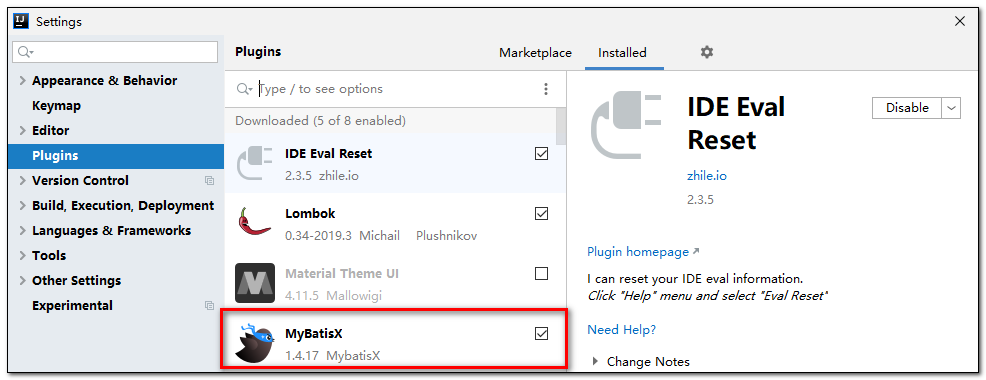
快速生成代码
新建一个Spring Boot项目引入依赖(创建工程时记得勾选lombok及mysql驱动)
<dependency> <groupId>com.baomidou</groupId> <artifactId>mybatis-plus-boot-starter</artifactId> <version>3.5.1</version> </dependency> <dependency> <groupId>com.baomidou</groupId> <artifactId>dynamic-datasource-spring-boot-starter</artifactId> <version>3.5.0</version> </dependency>配置数据源信息
spring: datasource: type: com.zaxxer.hikari.HikariDataSource driver-class-name: com.mysql.cj.jdbc.Driver url: jdbc:mysql://localhost:3306/mybatis_plus?characterEncoding=utf-8&useSSL=false username: root password: 132537在IDEA中与数据库建立链接
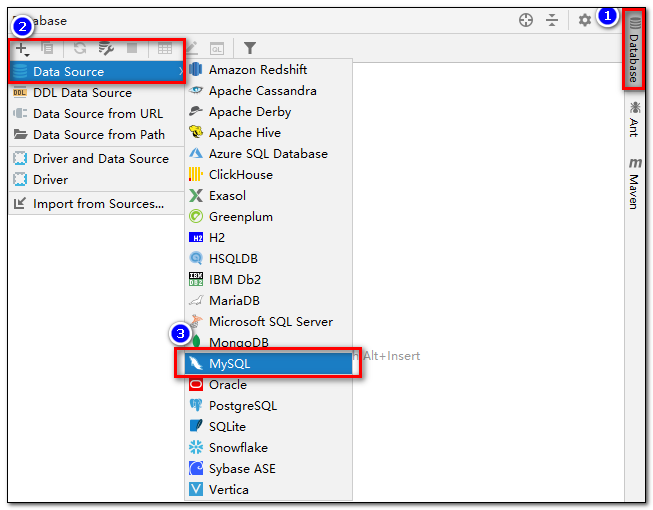
填写数据库信息并保存
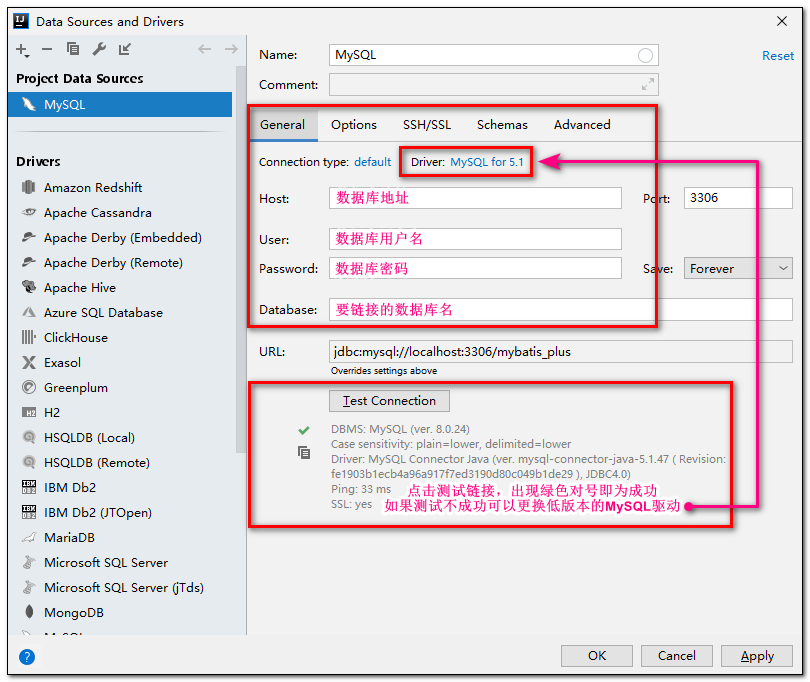
找到我们需要生成的表点击右键
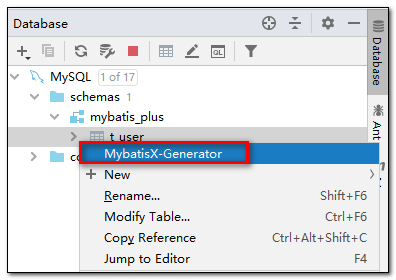
填写完信息以后下一步
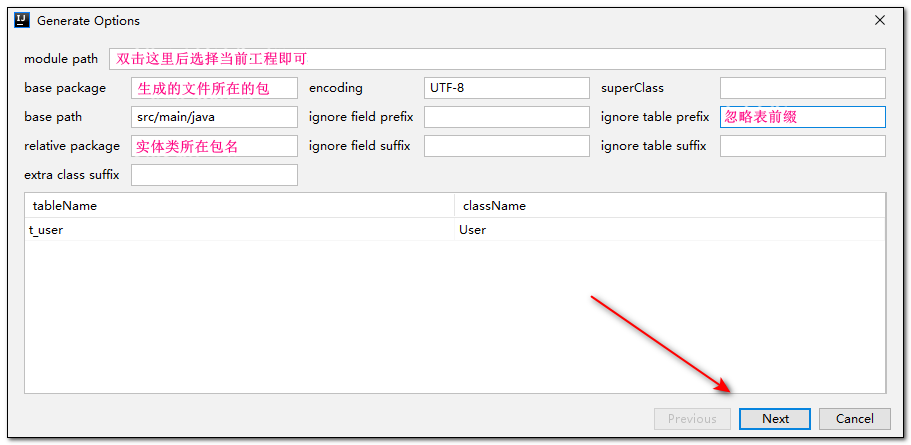
继续填写信息
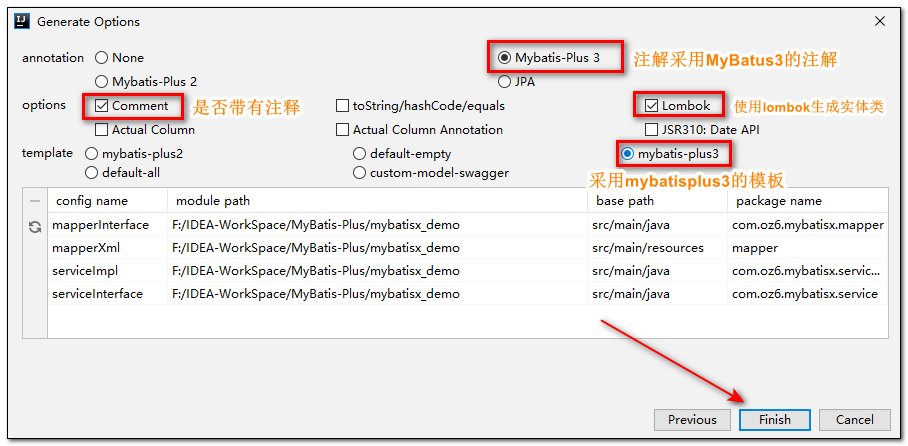
大功告成
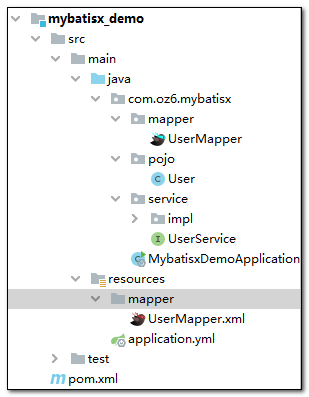
快速生成CRUD
MyBaitsX可以根据我们在Mapper接口中输入的方法名快速帮我们生成对应的sql语句

